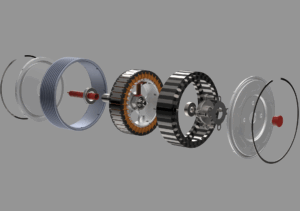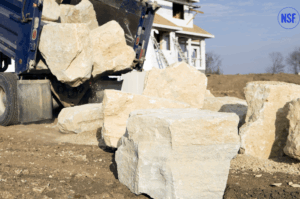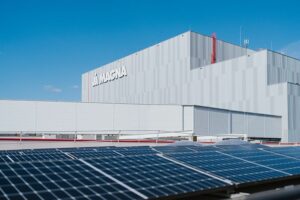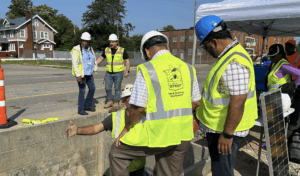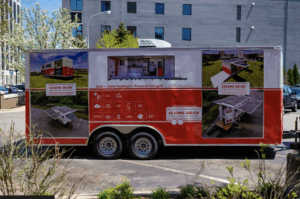
- Kim Kisner
- Business
- 05/20/2025
Co-Founder and CEO Paul Gross Talks Tech, Scale, and Strategy
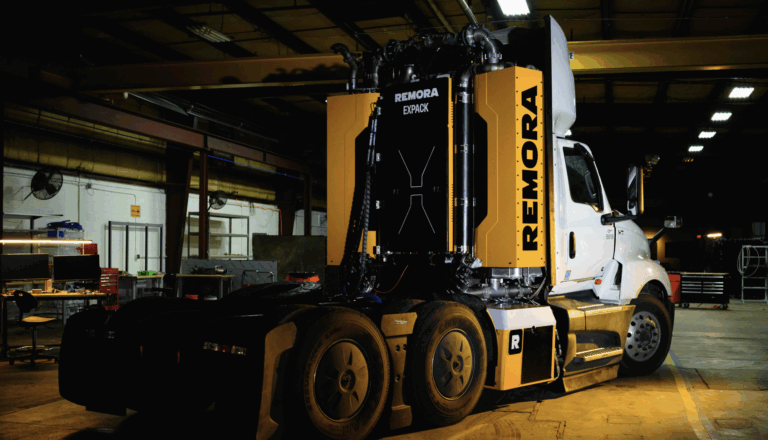
Founded in 2020 and based in Wixom, Michigan, Remora is developing a carbon capture device designed to attach directly to semi-trucks and locomotives and collect emissions. The captured carbon dioxide is then sold to end-users, creating a potential revenue stream for fleet operators and rail companies while reducing their environmental impact. The company has raised more than $100 million in venture capital.
SBN Detroit interviewed Paul Gross, co-founder and CEO of Remora, about the company’s current stage of development, the challenges of scaling climate technology, and what it takes to commercialize clean transportation solutions from Southeast Michigan.

Q: You’ve raised more than $100 million in venture funding. Who’s backing Remora, and what does that support enable?
A: We’ve raised $117 million to date across several funding rounds. Our latest round was led by Valor Equity Partners – they were one of the first institutional investors in Tesla, so we’re fortunate to have that kind of backing and belief in what we’re building. Other key investors include Lowercarbon Capital and First Round Capital. This kind of support has allowed us to invest in R&D and begin to partner with some of the biggest transportation companies in the world.
Q: To that end, Remora has drawn interest from companies like Union Pacific, DHL, and Ryder. What does that level of engagement say about the industry’s readiness to adopt carbon capture technology, and how has it shaped your strategic approach?
A: I’ve been amazed at how excited trucking and rail companies are about this technology. That level of interest tells me that the industry wants to act. They’re not just talking about sustainability – they’re ready to deploy solutions that make sense financially and operationally.
That’s been the missing link. Our system retrofits onto existing vehicles, and it pays for itself by generating revenue from the captured CO₂. That’s what makes it viable for these companies to adopt at scale.
Q: Where are you in terms of deployment and technology development?
A: We built our first carbon capture system for semi-trucks a few years ago, and that prototype taught us a lot. Our second-generation system is now running with a truck engine and achieving 90% capture efficiency – which we consider a major milestone. We’ve partnered with fleets like Ryder, Estes, and Werner and are preparing for wider deployment.
We’re also designing the system to be as compact and lightweight as possible to meet the operational needs of the industry. The scale of the opportunity is huge – there are about 2 million semi-trucks on the road in the U.S., emitting around 350 million tons of CO₂ per year.
On the locomotive side, we’re developing the world’s first carbon capture system for trains and testing it right now in Wixom. We’ll begin field deployment with Union Pacific next year.
Q: Remora’s approach stands out because it generates revenue through carbon capture resale. How do you see this model evolving as more companies adopt decarbonization strategies?
A: There’s already significant demand for CO₂ in the U.S. – around 75 million tons are used every year, and that demand is growing. Industries like food and beverage, wastewater treatment, and sustainable aviation fuel use it, but not to scale. We’re seeing CO₂ being converted into things like hand sanitizer and laundry detergent. So, we’re capturing a waste stream and turning it into a revenue stream.
In addition to selling CO₂, we also plan to sequester it underground using EPA-certified wells. There are federal tax credits supporting this, originally passed under the Obama administration and expanded under both Trump and Biden. So, whether through resale or sequestration, we have strong pathways to scale.
Q: What are the biggest barriers to broader deployment?
A: The biggest challenge right now is manufacturing at scale. This is the first carbon capture system ever built for a locomotive, and there’s no existing supply chain. We’re building it from the ground up, and we’re doing it mostly here in the U.S.
So, the focus now is on industrializing our manufacturing process so that we can produce systems quickly, cost-effectively, and at high quality. That’s essential if we’re going to deploy these systems at the speed the climate crisis demands.
Q: What advice do you have for other cleantech startups in Southeast Michigan or beyond?
A: One lesson is that it’s important to demonstrate commercial demand early. A lot of engineers and scientists are working on technology solutions in this sector, but you have to make sure you’re solving a real problem that your customer has.
We started talking to trucking companies on day one, even before we had a working prototype. Getting feedback early helped us design a system that met their needs, worked within their operations, and made financial sense. That kind of customer co-design has been huge for us.
Q: What metrics do you track to measure impact?
A: We focus on three key indicators: capture efficiency, product purity, and energy use.
Capture efficiency tells us what percentage of CO₂ the system is capturing, as I said, we’re at 90% on our latest truck engine tests. Product purity matters because a lot of our CO₂ is going to sectors that need high-purity gas, like food and beverage.
Energy use is the third metric. Carbon capture is inherently energy-intensive, and we’re working constantly to improve our efficiency. If the system draws too much energy, it’s not practical – so that’s a top focus for us.
Q: Looking ahead, how do you see Remora’s technology integrating with broader trends in transportation, such as fleet electrification, hydrogen fuel, or grid decarbonization?
A: Our technology is best suited for heavy-duty, long-haul vehicles — the sector that’s hardest to decarbonize. Electrifying a locomotive, for example, would require about 750 Tesla batteries. Building overhead electrical lines for freight rail would cost over a trillion dollars. And hydrogen still faces a lot of technical and infrastructure challenges.
Within this sector, we can retrofit existing vehicles and make a meaningful dent in emissions while generating a return. It’s not a replacement for electrification, it’s a complement. Electricity may be great for passenger cars and local delivery, but long-haul needs something different.
Be sure to subscribe to our newsletter for regular updates on sustainable business practices in and around Detroit.
Kim Kisner
- All
- Business
- Community
- Education
- Events
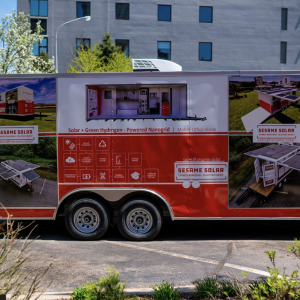
Sesame Solar, based in Jackson, Michigan, is pioneering a new model for clean, mobile power. The company’s self-generating “nanogrids” — compact, solar- and hydrogen-powered units that deploy in minutes — are designed to deliver renewable electricity anywhere it’s needed. From emergency response and telecom operations to defense and community resilience, the technology provides an alternative to the diesel generators that have long powered temporary and remote sites. SBN...
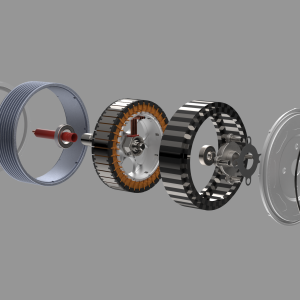
Farmington Hills-based Modal Motors designs and manufactures next-generation electric motors engineered for high torque density, simplified assembly, and scalability in the United States. The company’s transverse-flux architecture reduces reliance on rare-earth materials while improving efficiency and performance across mobility applications, including EVs, drones, and industrial equipment. By rethinking both motor design and manufacturability, Modal Motors aims to strengthen domestic supply chains and support the growing electrification industry. The...

Revolin Sports, a Holland, Michigan-based startup founded by siblings Hugh and Greta Davis, is aiming to change how sports equipment is made — starting with the fastest-growing sport in America: pickleball. The company is using renewable materials, energy-efficient manufacturing, and recyclable design to lower the environmental footprint of high-performance paddles. SBN Detroit interviewed Hugh Davis, cofounder of Revolin Sports, about how sustainable materials, circular manufacturing, and local partnerships...


